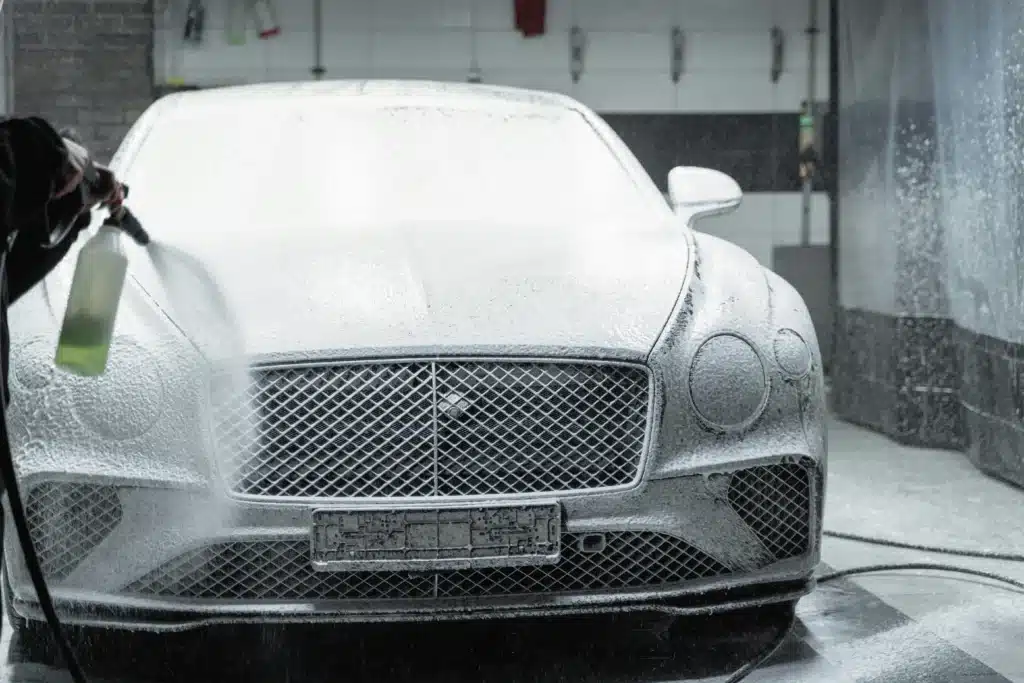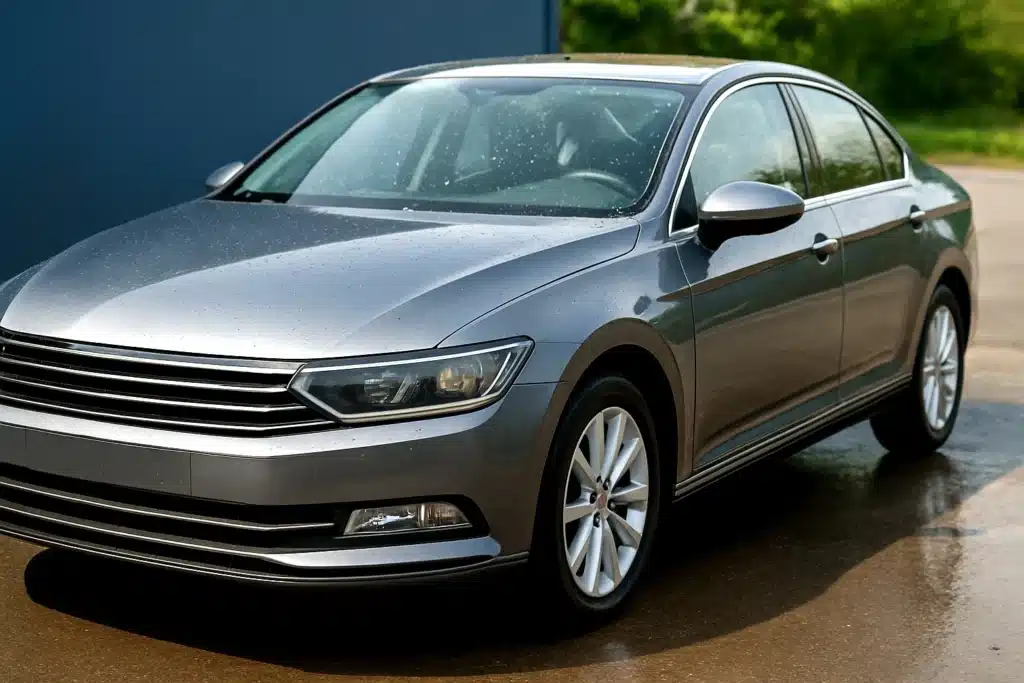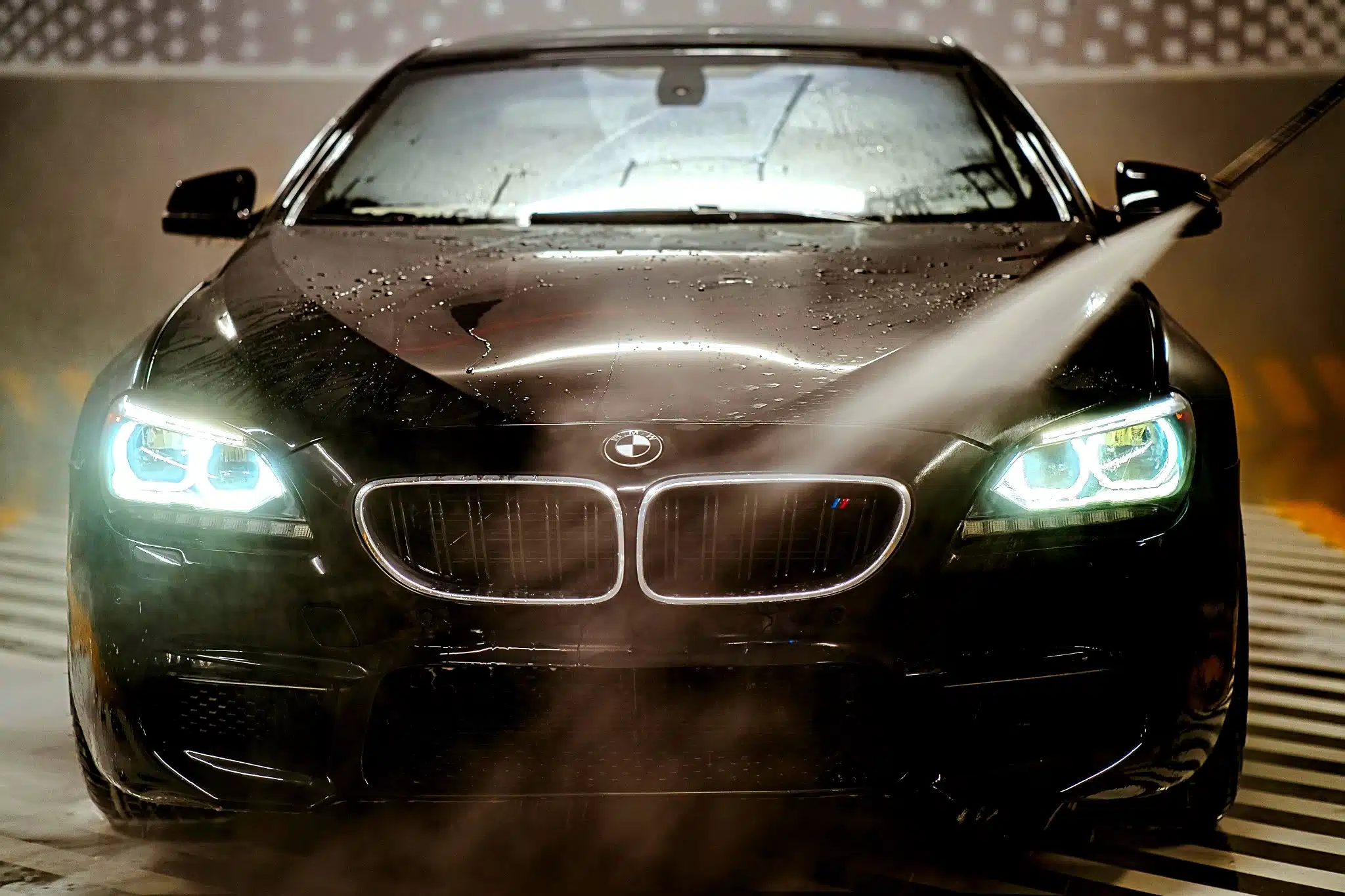Introduction
Can you pressure wash a wrapped car without causing damage? Many USA car owners and fleet managers wonder if this quick cleaning method is safe for vinyl. Although vinyl wraps are durable, they still require special care. By using the right pressure, temperature, and angle, you can pressure wash safely. In this blog, we’ll explain exactly how, plus answer common questions to help extend the life of your wrap.
Key Takeaways
- Pressure washing is safe if done at low PSI and the correct distance.
- Hot water, harsh detergents, and narrow nozzles can cause peeling or fading.
- Hand washing is gentler, but pressure washing can save time for large vehicles.
- Using approved cleaning products improves both shine and durability.
- Our vinyl wrap maintenance guide covers every step for long-term care.

Vinyl Wrap FAQs (People Also Ask)
Yes, you can pressure wash a wrapped car, but only if you use a low setting and proper technique. The nozzle should stay at least 12-18 inches away to avoid edge lifting. Moreover, you should never use a pinpoint spray. For owners who prefer a safer option, hand washing with mild soap is recommended. For complete guidance, review our vinyl wrap maintenance guide.
A pressure washer under 2000 PSI is generally safe for vinyl wraps, provided the spray angle is wide (40° or more). Higher settings may strip adhesive or damage corners. For instance, a fleet truck cleaned at 2500 PSI risks edge peeling, while one washed at 1800 PSI is typically unharmed. Additionally, pairing this with wrap-friendly soaps from our best products for cleaning vinyl wraps list ensures longer-lasting results.
Yes, hot water can damage vinyl wraps because it weakens adhesive. As a result, bubbling, lifting, or reduced lifespan may occur. Therefore, always use cold or lukewarm water when pressure washing. In comparison, hot rinses may work for bare paint but not for vinyl. To learn more about wrap longevity, see how long does vinyl wrap last?.
Hand washing is usually better for vinyl wraps because it applies less stress to the surface. However, pressure washing is convenient for large SUVs or fleet vehicles, provided you follow correct settings. For example, microfiber mitts with pH-neutral soap protect finishes far more gently. In addition, they help prevent swirl marks. USA owners often trust VinylWrapRo’s vinyl wrap maintenance guide to balance both methods.
Yes, pressure washing can peel vinyl wrap edges if the nozzle is too close or angled sharply. To prevent this, spray at a 45-degree angle and maintain proper distance. Once peeling begins, dirt and moisture may work underneath, making repairs necessary. Consequently, the best solution is prevention. Supplement pressure washing with safe cleaners such as those in our best products for cleaning vinyl wraps resource.
Washing every 1-2 weeks is ideal, but pressure washing should be occasional. Regular hand washing keeps vinyl looking vibrant while reducing wear. Furthermore, constant high-pressure cleaning may shorten lifespan. Therefore, alternating between gentle hand washes and occasional pressure washing is recommended. For deeper insights into durability, check our guide on how long does vinyl wrap last.

Final Thoughts
So, can you pressure wash a wrapped car safely? The answer is yes, as long as you respect pressure limits, water temperature, and spray angles. However, hand washing remains the safest and most effective routine. By combining both methods wisely, you can extend your wrap’s life and keep it looking sharp. For a complete step-by-step routine, explore our vinyl wrap maintenance guide and discover the best products for cleaning vinyl wraps.
With VinylWrapRo’s expert advice, USA owners and fleets can confidently protect their wraps year-round.

